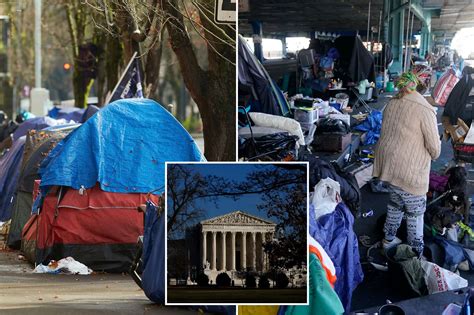The US Supreme Court has handed down a ruling permitting cities to ban homeless camps, igniting widespread debate on the ethical and practical implications of such a decision. The ruling justifies prohibitions on camping on public property by framing them under general laws applicable to all citizens, regardless of their housing status. Critics argue this ruling essentially makes it illegal to be homeless without offering meaningful alternatives. The discourse highlights the urgent need for effective and compassionate solutions to homelessness beyond legal restrictions.
For many, the ruling seems like a direct assault on the marginalized and vulnerable. One commenter poignantly highlighted, ‘It’s now, effectively, illegal to just exist as a homeless person.’ This sentiment captures the core concern: laws banning public camping might drive the homeless into more hidden, precarious situations, exacerbating their marginalization. Homeless individuals often find themselves criminalized for basic survival activities, such as sleeping in cars or under bridges. The ruling does not address the fundamental issue of lack of safe and accessible shelter, which leaves many homeless people in dire straits.
Opponents of the decision, like user notaustinpowers, point out the circular nature of the argument. To vote or affect change, individuals need identification, which a homeless person is unlikely to possess. Many homeless individuals lack the necessary documents, such as a driver’s license or state ID, because their belongings are often confiscated during police sweeps. Further complicating matters, obtaining these documents requires proof of residency and financial resources that homeless individuals simply do not have. This bureaucratic challenge creates a vicious cycle that prevents meaningful participation in the democratic process.
Supporters of the ban argue from a different perspective. They see homelessness impacting public spaces and creating safety hazards. One supportive commenter, polski-g, noted that laws governing public spaces apply equally to everyone and should be respected. Public spaces, like parks, often have rules prohibiting camping, smoking, and other activities to maintain order and safety. However, critics like alan-hn counter by questioning where homeless individuals are supposed to go if they do not have access to private property. These critical voices emphasize that without adequate public shelter, banning camping effectively leaves the homeless with no safe options.
In terms of practical municipal planning, this ruling offers cities leverage to manage public spaces but it opens a Pandora’s box of ethical dilemmas and logistical challenges. There’s concern that cities will not follow up these bans by providing adequate shelter options. Public shelters, where available, are often inadequate and fail to meet the needs of the homeless population. Commenters shared anecdotes of shelter conditions that are overcrowded, unsafe, or have restrictive religious requirements. This sentiment warns against the oversimplified view that shelters alone can address the complex issue of homelessness.
The broader implication of this ruling is the potential normalization of shuffling homeless populations from one jurisdiction to another. Commenters speculated on whether cities will provide one-way bus tickets to homeless-friendly municipalities or even attempt to funnel them into prison systems under various pretexts. These measures, critics argue, only serve to push the problem out of sight rather than solving it. They stress that criminalizing homelessness without increasing support for mental health, addiction services, and affordable housing is inhumane and counterproductive.
The ruling provides an opportunity to debate larger societal issues such as housing as a human right versus an investment. For example, some commenters pointed out that while there are many vacant homes across the country, they remain inaccessible to the homeless due to economic and legal barriers. This disparity illustrates the conflict between capitalistic principles and humanitarian needs. However, providing homes is not a panacea. Solutions must be multi-faceted, incorporating affordable housing, comprehensive mental health care, and job training programs to create a framework that genuinely addresses the roots of homelessness.
Ultimately, this decision underscores a critical juncture in American public policy toward homelessness. While cities now have clearer legal grounds to manage public spaces, it is imperative that these laws are implemented alongside meaningful social support systems. The debate around this ruling exemplifies the United States’ ongoing struggle to balance order and compassion, legality and humanity. Moving forward, holistic, empathetic approaches must be prioritized to ensure that while public spaces remain safe and accessible, the fundamental human rights of homeless individuals are not overlooked.


Leave a Reply